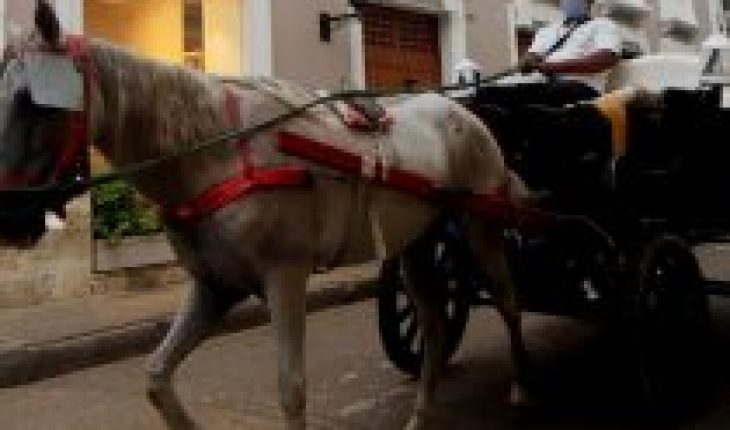
In December 2019, a municipal consultation in Viña del Mar led 65% of voters to reject the continuation of the traditional victories: horse-drawn carriages for sightseeing tours.
The decision led to the non-renewal of patents for coachmen after questions about animal and sanitary conditions.
Now, in Colombia they are worried about this type of walk. A recent report by the Attorney General’s Office (Public Ministry) collected what had been denounced in some associations and animal defenders for a long time: horses are not in a position to work.
More than 40 have exceeded the age limit to provide tourist services, are undernourished and the heart rates of the animals are above normal values due to physical exertion and strenuous working hours, according to the report.
For 60,000 Colombian pesos (about 12,000 Chilean pesos), couples or tourists can take a half-hour walk through the historic walled part of the city and enjoy the flowery and iconic Cartagena balconies or the historic bell tower of the Cathedral of Santa Catalina de Alejandría.
Horse carriages become the official vehicle when there is a renowned visit in the city or an international summit or congress and cruise ships that stop in the city also sometimes hire this vehicle for passenger fun.
A trade at risk
Fabio Arzuza, a coachman who has been in the trade for 36 years, denies this and stresses that the horses of the mecca of tourism in Colombia “are in good condition.”
He has raised his family thanks to this business and says that if they get to take away his horses they “kill him right away”. “Where are we going to work? Who is going to answer for our family?” he asks.
In the same situation are some 180 families, mainly of African descent, who depend on this work with which they support no less than 600 people.
In recent months, with tourism greatly depleted by the pandemic, many coachmen had to “badly sell some of their goods” to support their families and horses. “No one came to give us a kilo of corn, a piece of yerba for these coach horses,” denounces the vice president of the Association of Coachmen of Cartagena, Miguel Bustamante.
Horses need the same care and feeding if they are working or unemployed, the guild says. “Coach horses are not a motorcycle, they are not a vehicle that we leave parked anywhere and do not eat.”
Exploited horses
The animal rights activist of the Animal Protection Association of the Fany Pachón District says that “you can not play with the health of the animals, if there are 44 animals that are sick then they have to be replaced,” referring to the animals that the Attorney General’s Office found are too old to work.
Pachón assures that the horses are subjected to “forced hours (of work), more than they can execute in a day, they do not (have) good food, they are skinny”, and “where the ties are made because they have some wounds”.
The activist believes that repeat “animal abusers” should be penalized, and their permits to handle the carriages should be taken away.
The coachmen spend 10 thousand Colombian pesos a day for the lump of grass they eat, along with the amolene, afrecho, mogollas, molasses and water with which they feed it. “They don’t know that, they believe that horses eat paper and air,” the coachman reproaches the animalists.
“We love horses more than anything else, this is our company, this is our daily bread,” adds Bustamante, who recalls that every 15 days veterinarians of the Municipal Unit of Agricultural Technical Assistance (Umata) carry out controls on coach horses.
“If they remove the horses, the cars are over,” laments the coachman, who believes that would be “killing the city of Cartagena” and “leaving it without oxygen.”





